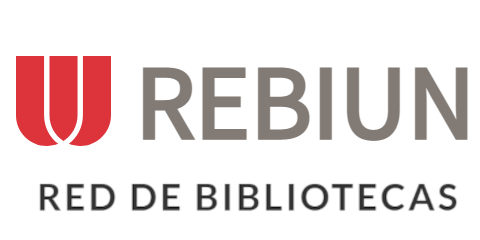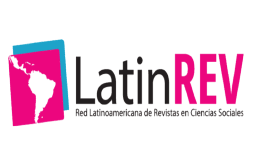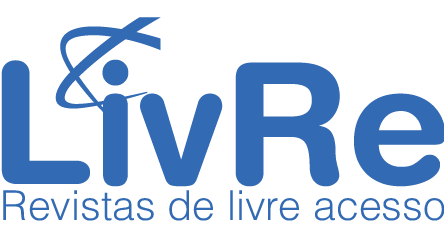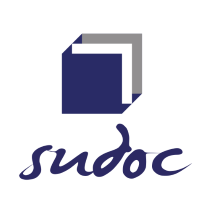The influence of the CommonLit platform on the development of reading skills as an academic reinforcement for A2 students
DOI:
https://doi.org/10.69639/arandu.v11i2.281Palabras clave:
commonlit platform, level a2, reading skillsResumen
Ecuador, a country of privileges due to its geographical location, has varied socio-ideological and cultural influences that significantly impact the learning and acquisition of a foreign language. Few students are aware of the importance of English. However, many do not feel a real interest in or the need to use the language in their daily activities in a society where they only try to cover a momentary requirement. The complexity of mastering a new language like English is even worse because learners have to face environmental, and emotional difficulties, as reflected in the quantitative study carried out, which suggests energizing their learning acquisition using the qualitative method that promotes their voluntary interest in reading comprehension, as stated by a survey and class observation carried out in the First “A” of Accountancy at the Isabel de Godin Educative Unit in Riobamba. Therefore, the implementation of the CommonLit platform will determine academic progress and reading proficiency as the main tool to improve their reading skills by addressing challenges according to different levels of English proficiency. In this sense, with the platform's interactive activities, adaptive learning tools, and variety of interesting information, participants' reading abilities significantly improve, according to the findings. Therefore, the CommonLit platform is a useful tool for students who intend to achieve A2 in their reading development since it enhances the academic level and cultivates an enduring enjoyment for reading.
Descargas
Citas
Afflerbach, P. (1990). The Influence of Prior Knowledge and Text Genre on Readers' Prediction Strategies. Journal of Literacy Research, 12(2). doi:10.1080/10862969009547700
Collins, A., & Smith, E. E. (1980). Teaching the Process of Reading Comprehension. Eric. Obtenido de https://eric.ed.gov/?id=ED193616
Creswell, J. W. (2007). Research design: Choosing among five approaches. SAGA.
Daar, G. F. (2020). Problems of English language learning in context: Based on some studies in Manggarai. (Yuris, Ed.)
Dung, D. T. (2020). The Advantages and Disadvantages of Virtual Learning. IOSR Journal of Research & Method in Education (IOSR-JRME), 10(3), 45-48. doi:10.9790/7388-1003054548
Faucett, S. (2021). From teacher to CEO How CommonLit’s founder is using technology to impact millions of teachers and students. Obtenido de https://blogs.cisco.com/csr/from-teacher-to-ceo-how-commonlits-founder-is-using-technology-to-impact-millions-of-teachers-and-students
Gedik, O. &. (2022). Reading Difficulty and Development of Fluent Reading. International Journal of Progressive Education, 18(1), 22-41. doi: https://doi.org/10.29329/ijpe.2022.426.2
Holmes, V. (2009). Bottom-up processing and reading comprehension. Journal of Research in Reading, 32(3), 309–326. doi: https://doi.org/10.1111/j.1467-9817.2009.01396.x
Lemov, D. D. (2016). Reading Reconsidered: A Practical Guide to Rigorous Literacy Instruction. En Jossey-Bass, & 1st (Ed.).
Lyon, G. (1998). Why Reading Is Not a Natural Process. Educational Leadership, 55(6), págs. 14-18. Obtenido de https://www.buddies.org/articles/extlyon.pdf
Maffea, J. (2020). Lack of Resources in Classrooms. English Department: Research for Change , 38.
Masuhara, H. (2013). Developing Materials for Language Teaching. In B. Tomlinson. Bloomsbury Academy.
Noordan, M. N. (2022). The integration of ICT in improving reading comprehension skills: A systematic literature review. Creative Education, 13(6), 2051-2069. doi:
https://doi.org/10.4236/ce.2022.136127
Norman, A. (2023). Educational technology for reading instruction in developing countries: A systematic literature review. Review of Education, 11(3). doi: https://doi.org/10.1002/rev3.3423
Novawan, A. T. (2023). Reflecting on the common European framework of reference for languages: Learning, teaching, and assessment (CEFR) in the Indonesian context. English in Academic and Professional Communication, 9(1), 1–10. . doi: https://doi.org/10.25047/jeapco.v9i1.3754
Oroujlou, N. (2012). The importance of media in foreign language learning. Procedia - Social and Behavioral Sciences, 51, 24-28. doi: https://doi.org/10.1016/j.sbspro.2012.08.113
Osorio, L. V. (2021). Elements of the Teaching learning Process and their interaction in the Educational Field. Qualitas, 23(23), 001-011. doi: https://doi.org/10.55867/qual23.01
Özdemi, V. S. (2017). Educational Research and Review. Academic Journal, 12(13). Obtenido de https://files.eric.ed.gov/fulltext/EJ1148720.pdf
Park, J. (2012). Early adolescent girls’ critical and communal reader responses to the young adult novel spea. Children s Literature in Education, 43(3), 191-212. doi: https://doi.org/10.1007/s10583-012-9164-5
Perdomo, B. (2022). Teaching creative careers in the pandemic: A study of digital tools. Learning and Teaching, 15(2), 53-80. doi: https://doi.org/10.3167/latiss.2022.150204
Qarqez, M. &. (2017). Reading Comprehension Difficulties among EFL Learners: The Case of First and Second-Year Students at Yarmouk University in Jordan. Arab World English Journal (AWEJ), 8(3), 421-431. doi: https://dx.doi.org/10.24093/awej/vol8no3.27
Ramos, M. &. (2010). Perceptions of quantitative methods in higher education: Mapping student profiles. High Educ, 61(4), 629-647. doi:https://doi.org/10.1007/s10734-010-9353-3
Rice, J. A. (2007). Mathematical Statistics and Data Analysis (third ed.). Belomont. Obtenido de https://korivernon.com/documents/MathematicalStatisticsandDataAnalysis3ed.pdf
Scott, D. (2005). Critical Realism and Empirical Research Methods in Education. Journal of Philosophy of Education, 39(4), 633-46. doi: https://doi.org/10.1111/j.1467-9752.2005.00460.x
Shihab, A. (2011). Reading as critical thinking. Asian Social Science. Asian Social Science Year, 7(8), pág. 209. doi: https://doi.org/10.5539/ass.v7n8p209
Siew., S. S. (2019). Investigating the validity and reliability of survey attitude towards statistics instrument among rural secondary school students. International Journal of Educational Methodology, 5(4), 651-661. doi: https://doi.org/10.12973/ijem.5.4.651
Spante, M. S. (2018). Digital competence and digital literacy in higher education research: Systematic review of concept use. Digital competence and digital literacy in higher education research: Systematic review of concept use. doi: https://doi.org/10.1080/2331186X.2018.1519143
Suárez, R. S. (2015). Academic goals, parental educational styles and their relationship. Electronic Journal of Research in Educational, 161-176. doi:https://doi.org/10.25115/ejrep.v20i56.4980
Tomlinson, B. (2023). Developing materials for language teaching.
Zhu, H. &. (2022). Digital competence in social work practice and education: experiences from Norway. Nordic Social Work Research, 12(5). doi: https://doi.org/10.1080/2156857x.2021.1899967
Zin, Z. M.-G. (2022). Critical Reading Ability and its Relation to L2 Proficiency of Malaysian ESL Learners. The Southeast Asian Journal of English Language Studies, 20(2), págs. 43-54. Obtenido de https://journalarticle.ukm.my/7214/1/4635-16800-1-PB.pdf
Publicado
Cómo citar
Número
Sección
Licencia
Derechos de autor 2024 Elsy Buñay Illapa, Mónica Elizabeth Bajaña Rosales, Johnny Segundo Campoverde López, Josué Bonilla Tenesaca

Esta obra está bajo una licencia internacional Creative Commons Atribución 4.0.





















